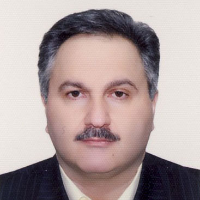Transmission and Retention Status of the Contamination Index (Escherichia Coli) with Different Levels of Salinity in the Saturated Column
Escherichia coli is the most common fecal coliform in the cow manure that is considered as an indicator of groundwater contamination. In this regard, the present study was designed to investigate the preferential transmission and retention of Escherichia coli bacteria as an indicator of pollution in terms of using saline water.
Laboratory studies were conducted in preferential flow system with synthetic m acro-pores with different diameter and salinity treatments under saturation flow in 2016. E. coli and chloride bio-tracer were used for detecting the effect of different water salinity levels. The wastewater samples were collected continuously during the transmission experiment at specific intervals. At the end of the experiment, three depths of soil from each column were sampled in two macro-porous and matrix areas. Then, the concentrations of bacteria and chloride were analyzed.
The highest and the lowest concentration of E. coli in the collected drainage were observed in salinity of 1dS m-1 and 4dS m-1, respectively. At a depth of 5 cm, the bacterial retention rate was maximal and equal to 1.3 × 105 CFU-1.
The results showed that most of the treated bacteria were retained in the surface layers of the soil. Also, the amount of contaminants passing through the soil decreased with soil depth, so that the retention rate was decreased 10% per 5 cm increase in depth. In addition, the high concentration of bacteria exhausting from the soil columns treated with high salinity is due to the role of minerals such as salt in the transmission of bacteria. Therefore, water salinity can play an important role in reducing the pollution of groundwater resources.
-
Evaluation of peat produced from rice husk
Maryam Azaru, Reza Ebrahimi*, Mahmood Shabanpour
Journal of Flower and Ornamental Plants, -
Improving the accuracy of soil heavy metal concentration estimation based on spectral reflectance by minimizing the effect of moisture with the external parameter orthogonalization algorithm
Soheila Alioghli, *, Hosein Ali Bahrami
Journal of Agricultural Engineering,



